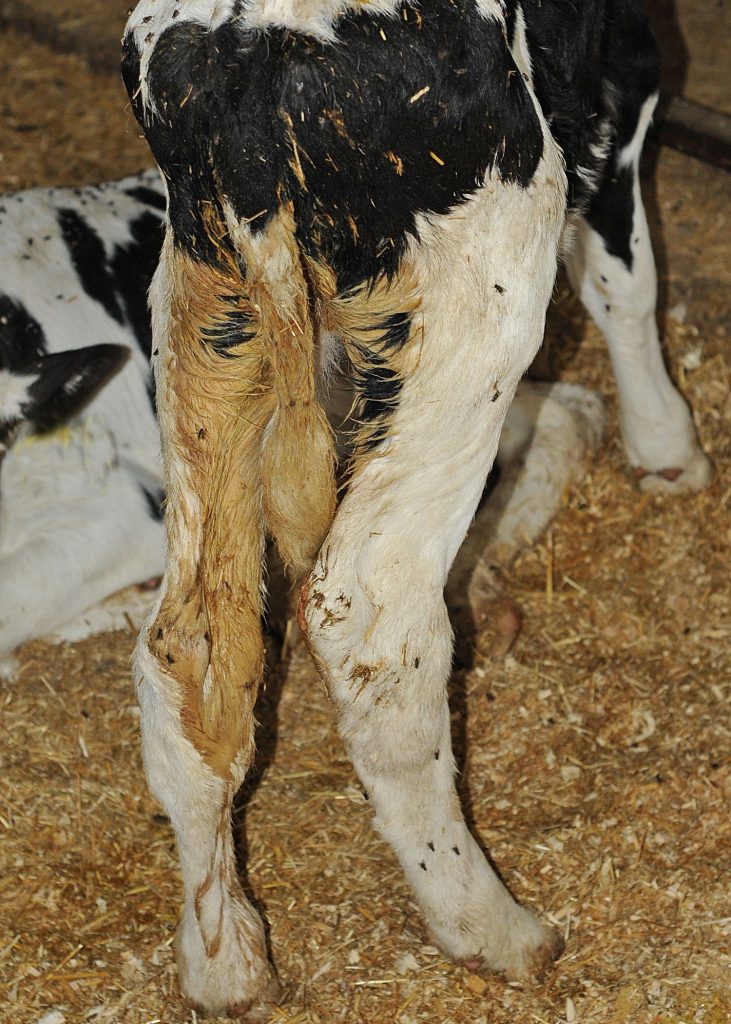Healthy Calf Conference
Follow to stay up-to-date on all Healthy Calf Conference updates. Speaker announcements, sponsorship information, registration announcements, and more.
Navigating different oral electrolyte options, and when to offer them, can get a bit confusing. They’re not created equally—each one boasts different benefits, some have DIN labels, and others are considered nutritional supplements. Choosing the right one to help combat dehydration and metabolic acidosis in scouring calves, which to offer after transport, and how to protect against heat stress, can be overwhelming, but highlights the importance of keeping calves well-hydrated. While this article focuses on supportive therapy for calves with dehydration due to diarrhea, producers should talk to their herd veterinarian about the right electrolyte profile for other situations.

The majority of dairy calf mortalities result from complications due to diarrhea. Calves experiencing fluid loss from diarrhea will become dehydrated and develop varying degrees of metabolic acidosis, as their blood reaches critically low pH. This stems from losses in manure, mineral imbalances in the blood, fermentation of nutrients that cannot be absorbed, and malfunctioning kidneys.
Many signs of dehydration in calves such as lethargy, lack of suckle reflex, and reluctance to stand, are caused by metabolic acidosis. To counter this effect and raise blood pH, offer an electrolyte containing an alkalinizing agent like acetate, propionate, or bicarbonate. Acetate and propionate are preferable to bicarbonate. These volatile fatty acids are precursors to glucose, facilitate sodium absorption in the small intestine, and help maintain low pH in the abomasum. An acidic environment in the abomasum prevents bacteria like E. Coli and Salmonella from proliferating and reaching the small intestine, perpetuating diarrhea. A study by Heath et. al (1989) also noted that electrolyte solutions with bicarbonate reduced growth rates in milk-fed calves, due to the impact on clot formation.
A calf with diarrhea loses sodium and other minerals in their manure, which also pulls water into their intestines, causing dehydration. In order to hydrate the calf, offer an electrolyte with sodium concentration between 90 and 130 mmol/L to facilitate water absorption. Electrolytes that are too low in sodium won’t adequately restore hydration in the calf, and those with high levels may run the risk of sodium toxicity if free choice water is not available.
Severe diarrhea also causes intestinal damage in calves, so they need help absorbing sodium, typically through amino acids like glycine, or a volatile fatty acid that is absorbed in the intestine, like acetate or propionate. Glucose can also help with sodium absorption. Electrolytes that are deemed “high energy” contain more glucose and tend to have higher osmolality, meaning a higher concentration of particles in the water—if it’s too high, it can make diarrhea worse and cause bloating by slowing abomasal emptying. Oral electrolytes should be between 250 and 300 mOsm/kg. Keep in mind that the amount of glucose in electrolyes will not provide enough energy for a young calf, and milk feedings should be maintained. Mixing electrolytes into milk or milk replacer also creates high osmolality, and is not recommended.
Intestinal damage caused by severe diarrhea also impairs the calf’s ability to absorb nutrients. These nutrients pull water into the gut, which can make metabolic acidosis worse. The best way to feed calves experiencing diarrhea is to offer alternate feedings of milk or milk replacer, and electrolytes. It may be necessary to reduce the size of each feeding, and offer smaller feedings with a nipple more often, to improve digestion.
Recognizing early signs of illness and offering calves fresh, clean water, along with milk feedings and electrolytes via a bottle or a teat bucket when they’re not feeding as quickly, or as much as normal, will give you the best chance for success. Milk feedings should not be administered via an esophageal feeder, although oral electrolytes may be if done with care not to damage the esophagus. Ensure products are mixed according to the package label.
Not every case of diarrhea calls for oral electrolytes—sometimes the dehydration level of the calf may necessitate intravenous (IV) therapy. Working with your veterinarian to help identify sick calves early, determine the best electrolytes for your herd, and when to call for their assistance, is the key for success.
To learn more about assessing dehydration, read this article on CalfCare.ca: Combating dehydration.
Follow to stay up-to-date on all Healthy Calf Conference updates. Speaker announcements, sponsorship information, registration announcements, and more.
The Codes of Practice are nationally developed guidelines for the care and handling of farm animals. They serve as our national understanding of animal care requirements and recommended practices.